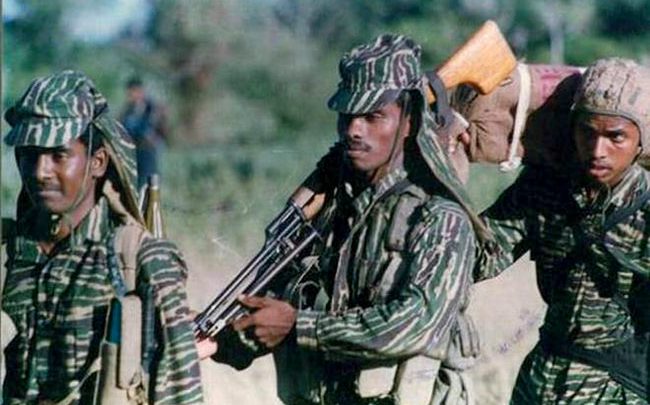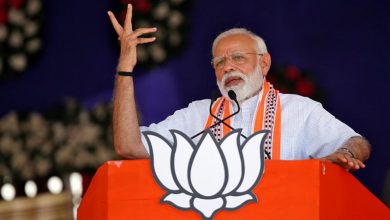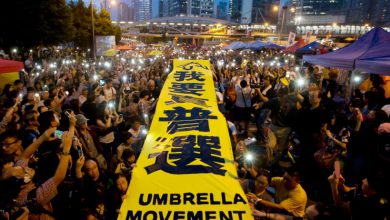AllAsia and OceaniaResolved
The Battle for Sri Lanka
The Sri Lankan Civil War fought to create an independent state for the country’s Tamil population. After a protracted military conflict lasting 26 years, the end of the Sri Lankan civil war concluded in 2009.

The Legacy of British Colonization in Ceylon
The origins of the Civil War in Sri Lanka can be traced back to ethnic and political conflicts between the Sinhalese majority and Tamil minority on the island nation. When the country was known as Ceylon during British rule, British Governor William Manning actively encouraged communal representation for constitutional reforms which effectively tarnished the representation between Tamil and Sinhalese populations.
After independence from the British Empire in 1948, the controversial Ceylon Parliament passed the Ceylon Citizenship act which discriminated against the Tamil minority which made it difficult – if not impossible – for Tamils to ascertain citizenship. Here, about 700,000 Tamils were rendered stateless and an additional 300,000 were deported to India. Subsequently, the country’s Prime Minister passed the Sinhala Only Act, which officially replaced Sinhala as the official language of the country. Tamils saw this as a deliberate move to discourage employment in the public sector, citing civil and economic discrimination.
Outbreak of Civil War
Tamil youth in the North and East began to form militant groups on Sri Lanka in the late 1970s. Independently, the groups developed the Colombo Tamil Leadership, which eventually morphed in to what is known today as the Liberation Tigers of Tamil Eelam (LTTE) in 1976. The group was responsible for campaigns of resistance against the state, targeting policemen and moderate Tamil politicians who were attempting dialogue with the majority. The groups first major operation was the assassination of Mayor Alfred Durarappah in 1975.
The LTTE was a collection of paramilitary organizations which took inspiration from the PLO. They gained prominence for a series of violent attacks including the Kent and Dollar Farm Massacres of 1984 and the Anuradhapura massacre of 1985. Because of many Tamil casualties, splinter groups began to work with the Sri Lankan government. Members of these groups opposed LTTE’s goal of an independent state.
India’s Involvement
India became involved in the Sri Lankan civil war in the 1980s in order to project India as the dominant power in the region and the worry of Tamil populations seeking independence within India. Ethnic kinship of Tamil populations in the Indian state of Tamil Nadu encouraged storing support of Tamils in Sri Lanka. Different state and national Indian agencies provided support to the Tamils (specifically the LTTE) – their efforts included providing arms, military training, food, medicine, and served as party to Indo-Sri Lanka Peace talks. Support for the LTTE in India dwindled after the assassination of Rajiv Gandhi, who was considered a threat to Indian support of Tamil independence.
Eelam Wars II & III
Violence in Sri Lanka continued, despite amendments to the country’s constitution and peace talks. In June of 1990, the LTTE killed 600 policemen in the country’s eastern province after a surr3ender on the promise of safe conduct. The government embargoed food and medicine entering the Jaffna peninsula. Over the next five years, thousands were killed including military, police, civilians, women and children Muslim populations in the north were expelled from their homes creating a refugee crisis. This war moved into its third phase in 1995 following a failed ceasefire in which the LTTE attacked two gunboats on the Sri Lanka Navy. After this, the government was determined to pursue a policy of war for peace in order to take over the rebel stronghold of Jaffna.
The 2002 Peace Process
By 2000, human rights groups estimated that over 1 million people in Sri Lanka were internally displaced persons. Norway was asked to mediate between the two sides, and this international diplomatic movement began the final negotiation of the settlement to the conflict between the two. Despite this, the LTTE carried out a suicide attack on the country’s biggest international airport which damaged the economy and tourism.
The LTTE began to express a desire for peace in late 2001. Speculations as to this include internal pressures and the direct support of the United States for the Sri Lankan government as part of George W. Bush’s war on terror. In addition, LTTE leadership was crumbling from the inside, and assassination attempts were made on high ranking individuals. In December of 2001, the LTTE announced a ceasefire with the Sri Lankan government which was reciprocated two days later. The government also lifted the long-held embargo on rebel-held territory.
The two sides formed a memorandum of understanding in February of 2002. With Norway as mediator, it was decided that a group of Nordic nations would monitor the ceasefire through the Sri Lankan monitoring mission. Peace talks began in Phuket, Thailand followed by additional meetings in Norway, Germany and Japan. The group representing the Tamils officially dropped their request for an independent state.




